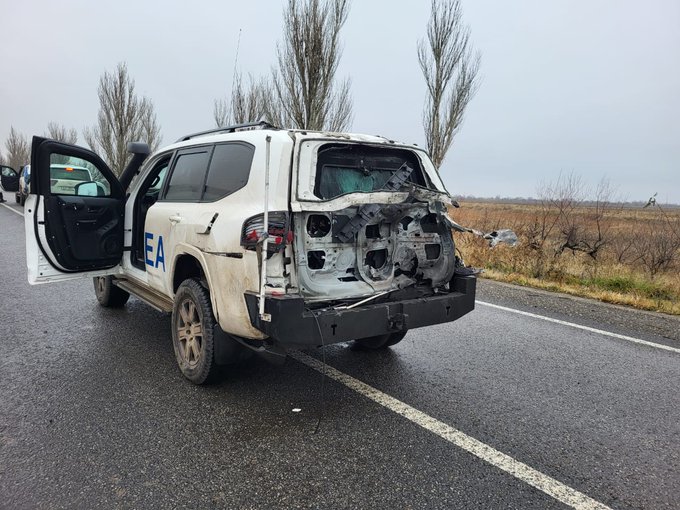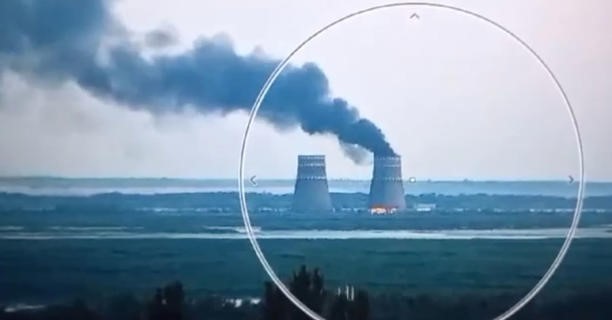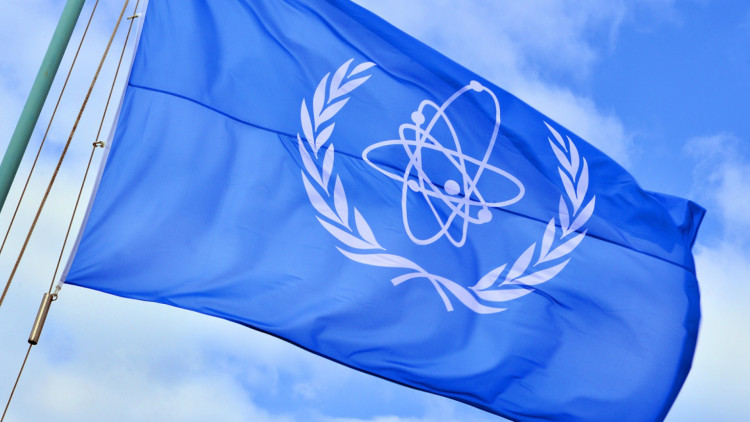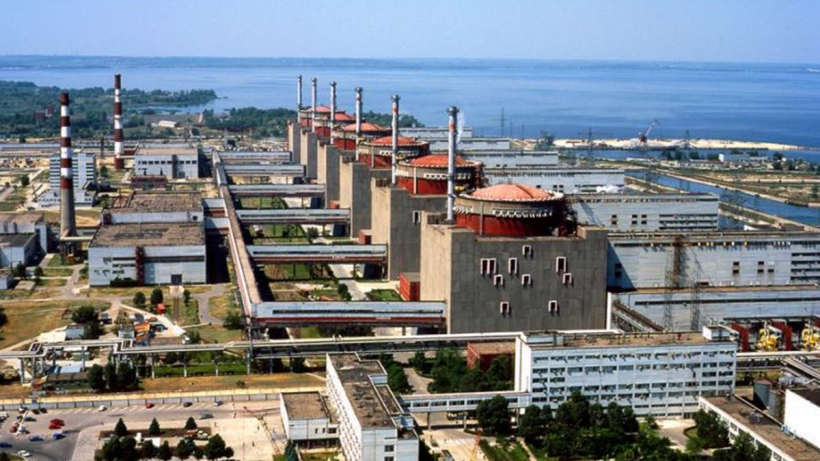The IAEA vehicle struck by a drone within the Zaporizhzhia region of Ukraine. (Image: X/@ZelenskyyUa)
A drone targeted and damaged an official vehicle of the International Atomic Energy Agency on December 10 as it traveled toward the front line in eastern Ukraine during a rotation of IAEA teams at Ukraine’s Zaporizhzhia nuclear power plant (ZNPP). In a video message, IAEA director general Rafael Mariano Grossi condemned the strike as an “unacceptable” attack on IAEA staff working to prevent a nuclear accident during a military conflict.
Argonne director Paul Kearns, undersecretary of state for arms control and international security Bonnie Jenkins, EPRI chief nuclear strategy officer Neil Wilmshurst, and DOE acting assistant secretary for nuclear energy Michael Goff spoke at COP29 in Baku, Azerbaijan. (Photo: PNNL/Nazar Kholod)
Argonne National Laboratory will play a leading role in planning and rebuilding a nuclear-generated clean energy infrastructure for postwar Ukraine as part of the lab’s focus on developing small modular reactor applications to help countries meet energy security goals. The latest plans, described in a November 19 article, were announced on November 16 at COP29 in Baku, Azerbaijan.
Screenshot from a video released by Ukrainian president Volodymyr Zelenskyy shows a fire that broke out at the Zaporizhzhia nuclear power plant on August 11, 2024.
Thick, black smoke pouring from one of the cooling towers at Ukraine’s Zaporizhzhia nuclear power plant over the weekend raised alarm about safety at the facility as the military conflict with Russia continues.
On-site staff from the International Atomic Energy Agency witnessed the smoke and reported hearing multiple explosions at Zaporizhzhia, which is the largest nuclear plant in Europe and one of the largest worldwide.
Ukraine's Zaporizhzhia nuclear power plant, prewar. (Photo: Energoatom)
An external radiation monitoring station was taken out by shelling and fire near the Zaporizhzhia nuclear plant in Ukraine the last week of June.
This brings the total to four of the plant’s 14 radiation monitoring sites that are out of commission, further reducing the effectiveness of its off-site capability to detect and measure any radioactive release during an emergency, said IAEA director general Rafael Mariano Grossi.
Rafael Mariano Grossi addresses the Nuclear Pools' Forum in Zurich. (Photo: D. Candano Laris/IAEA)
International Atomic Energy Agency director general Rafael Mariano Grossi was in Switzerland last week to talk with insurance executives at the Nuclear Pools’ Forum about the potential of nuclear power.
A cut-away view of Westinghouse’s AP300 reactor. (Image: Westinghouse)
Power generation from nuclear fission as a clean and stable source of electricity has secured the interest of policymakers and industry leaders around the globe. Last fall, the United States spearheaded a pledge at COP28 to get countries to agree to triple nuclear capacity worldwide, and recently the members of the Group of 7 (G7) nations that currently use nuclear power have reaffirmed their pledges to invest in that power source to cut carbon emissions.
As of this writing, U.S. policymakers are trying to make good on that promise by passing legislation to support nuclear power, funding the domestic fuel supply chain, and working to pass the ADVANCE Act. On top of the support from Washington, D.C., power-hungry industries like data centers and chemical engineering are looking to secure stable, carbon-free power directly from power plants.
A screenshot from a DOE video showing the eight Ukrainian students from the department’s internship program at Argonne National Laboratory, along with one of their tour guides (second from left). (Image: DOE)
Eight graduate students from Ukrainian universities have completed a two-year Department of Energy internship program that included a visit to Argonne National Laboratory.
The Zaporizhzhia nuclear power plant. (Photo: Energoatom)
An official from Russia’s state-owned nuclear power company Rosatom said this week that there are no current plans to reopen the Zaporizhzhia nuclear power plant in Ukraine.
















